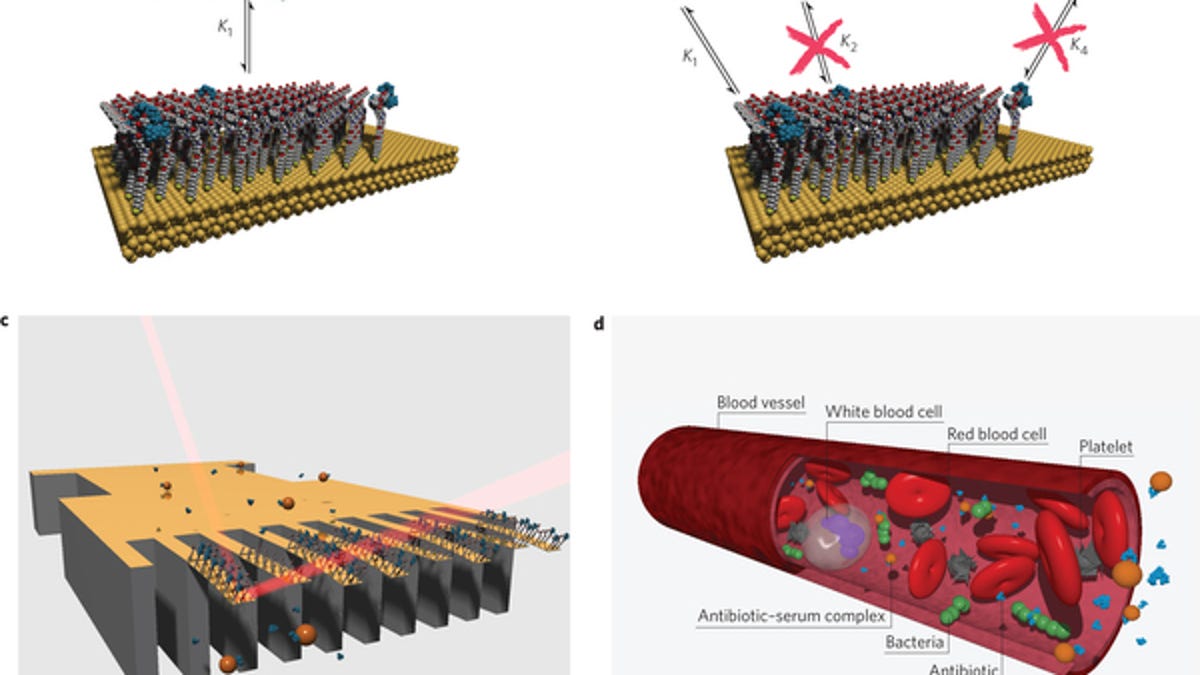Supertiny sensors could improve antibiotics in the fight against superbugs
Researchers turn to physics, not just chemistry, to help break down bacterial cell membranes and fight infections.

Among the most effective antibiotics are ones that work like termites eating away at the wooden walls of a structure -- only here the drugs are attacking the cell walls of bacteria until they collapse. Unfortunately, other molecules in a person's bloodstream can bind to those antibiotics and render them unable to help tear down the cell walls.
So says a researcher who's just helped develop nanoscale sensors that can determine how well an antibiotic is working by rapidly measuring the concentration of active antibodies in a blood sample.
Reporting in the journal Nature Nanotechnology, researchers from the UK, Kenya, and Australia say their sensor, which is just one-billionth the size of a meter, looks for a cell wall to bend -- something that happens when under assault by antibiotics.
"This enables us to measure how many antibiotic molecules are free in the blood to attack bacteria and treat the infection based upon how much force they exert onto the wall," Matt Cooper, a professor at The University of Queensland's Institute for Molecular Bioscience in Australia, said in a school news release. "Understanding the way antibiotics use physical force against bacteria could also provide researchers with a new angle on the design of better drugs to fight superbugs, which often have thicker, stronger cell walls."
Because the amount of free antibiotics varies slightly from one person to the next, the dosage could be very specifically tailored to each individual to more swiftly treat an infection.
With drug-resistant superbugs causing infections and deaths in hospitals and beyond, researchers are looking at ways to stress these bacterial cell membranes from many angles, not just chemically (i.e., making new or better drugs). These researchers demonstrate that physics might provide some tricks as well.
If you're not convinced, an excerpt from the study abstract further clarifies this approach: "Here, we use nanomechanical cantilevers as surface-stress sensors, together with equilibrium theory, to describe quantitatively the mechanical response of a surface receptor to different antibiotics in the presence of competing ligands in solution."
Take that, superbugs! Our tiny tools just might outdo you yet!

